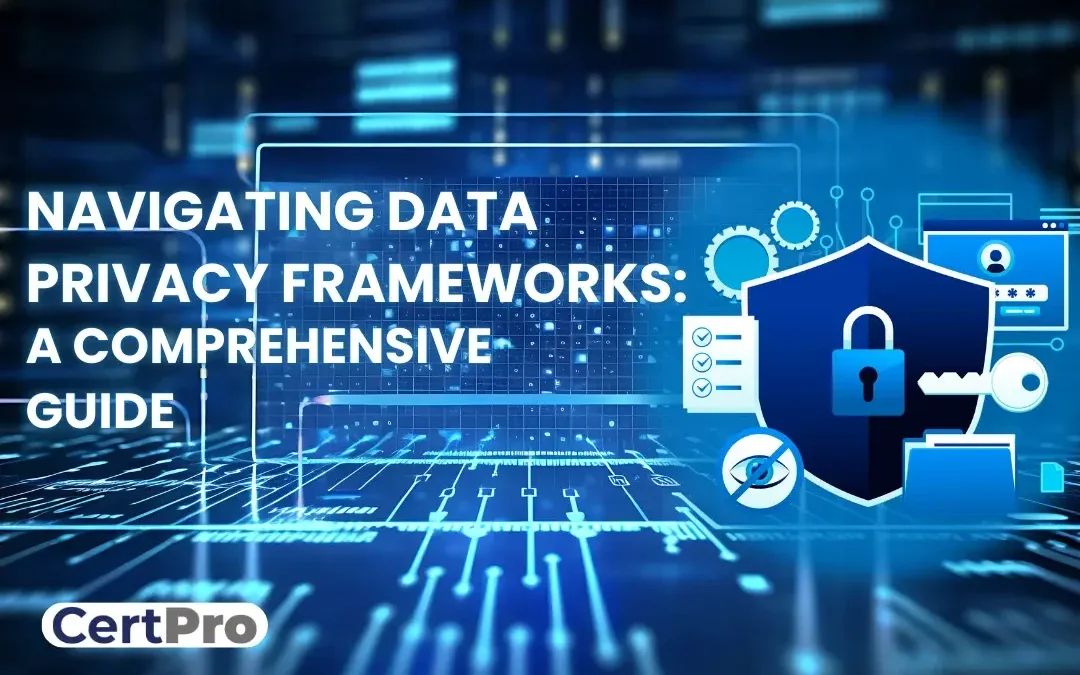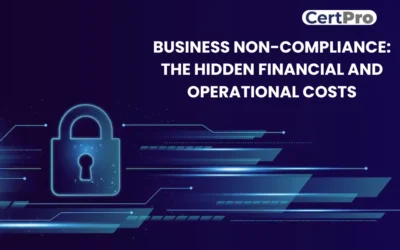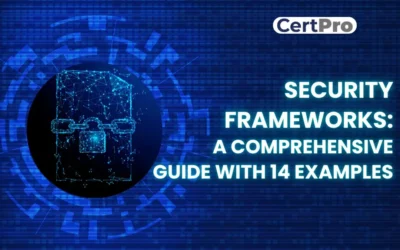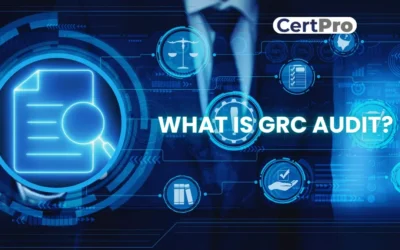Globalization has intense effects on business functioning and scaling. In today’s digital world, companies are generating an unprecedented rate of data that requires protection from emerging cyber threats. In addition, recurring data breaches and privacy concerns make headlines and signify the importance of data privacy frameworks. Data is an asset in modern businesses that needs cyberattack protection and security. Therefore, in the past few years, big sharks in the market have been facing cybersecurity issues, which points out the importance of compliance in businesses. Thus, implementing the data privacy framework can safeguard the data and help develop business relationships with clients and customers.
This comprehensive guide will discuss the various aspects of data protection frameworks, their importance, how to implement them, and the future of data privacy.
UNDERSTANDING THE DATA PRIVACY FRAMEWORK
Data privacy ensures an individual’s right to control personal information collection, use, and disclosure. Thus, it encompasses the legal, ethical, and technical aspects of securing sensitive data from unauthorized access. In addition, data privacy follows the fundamental human rights in securing private data from hackers. In today’s fast-moving world, data is constantly generated and shared through multiple mediums. Hence, it increases the concerns regarding data privacy, and individuals have the right to know where their data is used and accessed. Here are some important points are listed below.
Importance of Data Privacy in the Modern World
Data is the organization’s lifeblood, and it helps the organization run safely. Therefore, organizations are responsible for protecting data from misuse. In this regard, organizations can implement technical and administrative measures to protect customer’s data. Thus, data privacy frameworks encourage an organization’s cybersecurity strategy.
Let’s discuss the importance here:
Improve Brand Reputation: Implementing data protection frameworks boosts customer trust and loyalty. Customers feel secure, knowing that their data will remain safe. Surprisingly, there has been an increase in data breaches, making customers concerned about their data safety.
Improve Data Management: Data privacy audits businesses to review data storage and handling processes. Thus, the process disposes of irrelevant and trivial data from the database, making it more valuable and impactful. Consequently, it reduces the cost related to data storage and processing.
Avoid Penalties: One of the most advantageous aspects of the data privacy framework is avoiding reputational and financial damage risks. A hygienic data management system indicates that the organization is safe from legal and economic consequences.
EXAMPLES OF DATA PRIVACY FRAMEWORKS
Multiple data privacy frameworks are available to ensure data security in different industries. Let’s discuss some common frameworks in briefly:
General Data Protection Regulation (GDPR): The European Union established the regulation to revolutionize data privacy. Therefore, GDPR provides a comprehensive framework for data protection that emphasizes transparency, accountability, and individual control over their data. The regulation only applies to EU citizens but has a global impact in the era of globalization. Therefore, the rules mandate explicit customer consent before collecting personal information and notify authorities of data breaches within 72 hours of the incident.
Health Insurance Portability and Accountability Act (HIPAA): This regulation is specially tailored for the healthcare industry in the USA. It aims to protect sensitive health information and create a standard operating procedure for healthcare providers. The regulation strictly follows patient medical data storage, transmission, and access. The compliance regulation ensures data encryption and secure communication. Thus, regular audits avoid the risk of hefty fines and data breaches.
California Consumer Privacy Act (CCPA): The Act ensures California’s consumer rights regarding collecting and using personal data. In addition, it allows customers to opt out of the sale of their data and seek legal intervention for privacy violations. Similarly, the data privacy frameworks assure consumers of organizations’ clear privacy policies and security practices. Therefore, non-compliance with the CCPA can result in hefty fines.
HOW TO IMPLEMENT A DATA PRIVACY FRAMEWORK
Organizations must follow several steps in implementing the data privacy frameworks. Some common steps are discussed below:
Understand Your Data: Organizations must understand and evaluate the data environment before implementing any data privacy framework. Simply put, they must realize the types of data they collect and manage. Thus, this helps to identify potential data safety and security risks. In addition, the overall knowledge of the data landscape allows for recognizing the flaws and opportunities of data privacy frameworks.
Scope of Privacy: It is essential to outline the scope of your privacy challenges and ensure that the company and clients understand them. In this regard, information must be gathered to identify the legal obligations of data privacy based on the geographical locations where the data is processed. Thus, recognize the relevant regulations and strict requirements to implement the compliance.
Develop Data Privacy Policies: After recognizing the scope, focus on developing data safety policies and procedures. In addition, align the data privacy objectives with your organization’s goals. Consequently, data minimization or purpose limitation improves the database status. You can inform visitors on your site regarding the purpose of cookies for their data. If anyone is indifferent, they can avoid the cookies, which also helps in data minimization.
Conduct a Gap Analysis: After that, a thorough gap analysis will be conducted to identify organizations’ vulnerabilities. Manual auditing or automation tools can help organizations with gap analysis. The process helps to identify potential control failures and actionable recommendations to address security and privacy gaps.
Implement Privacy Policies: The gap analysis identifies process flaws that must be remedied. The process involves following the corporate rules by the staff, partners, and vendors. However, modifying existing laws and regulations helps improve your organization’s data security.
Conduct Regular Training: The next step is educating employees about data privacy frameworks and their responsibilities. This can be achieved by identifying the training materials, providing the resources, and tracking the effectiveness of the training. Therefore, such training and guidance can help improve the employees’ skills and responsibilities.
Continuously Monitor and Evaluation: Data privacy frameworks require continuous monitoring and evaluation. Thus, integrating compliance monitoring as part of regular practice can detect and solve emerging risks.
The above steps are generic and can be changed based on the industry’s specific needs and demands. Therefore, for more details, visit CertPro.com, and our representatives will guide you.

KEY CHALLENGES IN NAVIGATING MULTIPLE FRAMEWORKS
Implementing the data privacy framework can be challenging. The challenges are:
Compliance Issues: Businesses with a global standard are required to apply multiple frameworks. Different geographic locations demand certain regulations to be followed to continue the business. Suppose businesses in California are required to follow the CCPA, whereas European countries require GDPR for data security. Thus, companies working in both locations can face difficulties applying both compliances. Therefore, businesses can get professional help from the local region to implement compliance.
Following the Local Laws: In data security, multiple region-specific local laws are available that businesses need to follow. However, these laws can influence your organization’s overall data privacy framework. At some point, implementing local laws can create a financial burden. Still, organizations should follow the regulations to continue their businesses legally.
Consent Management: Some data privacy frameworks demand customer consent to collect and manage the data. However, this process can create difficulties in managing the frameworks. Therefore, data obsoletion can interfere with the overall data collection and segregation. Thus, organizations can seek professional help to eliminate the complications in the process.
THE FUTURE OF DATA PRIVACY FRAMEWORKS
The sophistication of technologies will change the future of data privacy framework.
Emerging Trends in Data Privacy: Because technology is changing so quickly, there are new trends and problems in data privacy. Some new trends are that data anonymization is becoming more important, data ethics is becoming more popular, and AI is becoming more critical in data privacy practices. Hence, businesses must keep up with these changes and adjust their data privacy policies accordingly.
Impact of Technology on Data Privacy: With how quickly technology changes, businesses are now gathering vast amounts of data from many places, like IoT devices, social media sites, and innovative tech. This massive amount of data gives data privacy systems both chances and problems. Technologies like encryption and machine learning make privacy safer and create new security holes that must be fixed.
FINAL THOUGHTS
In this digital world, following the rules about data can help you get ahead of the competition. This is very important if you want to improve the honesty of your business, keep your customer’s trust, and stand out in a crowded market. In conclusion, data privacy frameworks are necessary where private data is always at risk. As we move into the future of data privacy, businesses must stay alert, follow new trends, and keep putting the safety and protection of personal information first.
Furthermore, compliance is essential for more than just following the law. It also helps build company loyalty, attract employees, and improve data management systems. Therefore, companies must follow the rules for data compliance that are right for their data type. However, as data laws constantly change and technology improves, the implementation must keep up with new ideas and flexibilities.
FAQ
What is the primary goal of data privacy?
Data privacy means keeping personal information safe from people who shouldn’t have access to it and letting people choose who can see their information.
What is the critical concept of data privacy?
The basics of data privacy are confidentiality, security, limits on data collection and use, openness about data use, and following the proper data privacy rules. When protecting private data, businesses should follow best practices for security.
What is the relationship between cybersecurity and data privacy?
Cybersecurity concerns all digital networks and systems that store, send, process, and receive information, while data protection only concerns ensuring that data is correct.
What is the difference between privacy and compliance?
Data privacy means keeping private and sensitive information from other people. Keeping data private is a realistic and technical issue, while data compliance is the legal side of data management.
What is data privacy compliance?
Data compliance means managing and handling personal and sensitive data in a way that follows protection and security rules set by the government, the industry, and your own company. While data compliance standards can differ depending on the business, region, or country, they usually have the same goals.

About the Author
BHOOMIKA JOIS
Bhoomika Jois is a creative content writer specializing in compliance, ISO 27001, GDPR, and SOC 2. As a Social Media Marketing Specialist, she amplifies her engaging content. Bhoomika’s knack for simplifying complex topics makes compliance and cybersecurity accessible to all.
BUSINESS NON-COMPLIANCE: THE HIDDEN FINANCIAL AND OPERATIONAL COSTS
Businesses are always in a dilemma regarding whether or not to be compliant. Most companies think that compliance will problematize their operating process. However, highly regulated industries like financial and healthcare services meet the legal obligations for...
Security Frameworks: A Comprehensive Guide with 14 Examples
Technological advancements make cyberattacks more sophisticated and advanced. Hence, organizations must keep up with the latest cybersecurity frameworks in these complicated scenarios to sustain themselves in a dynamic threat environment. Different cybersecurity...
WHAT IS GRC AUDIT?
In modern businesses, GRC is essential for upgrading the existing compliance practice. Thus, GRC meaning signifies governance, risk, and compliance which manage risks. The GRC audit helps to optimize the processes and controls of industry-specific regulations....




